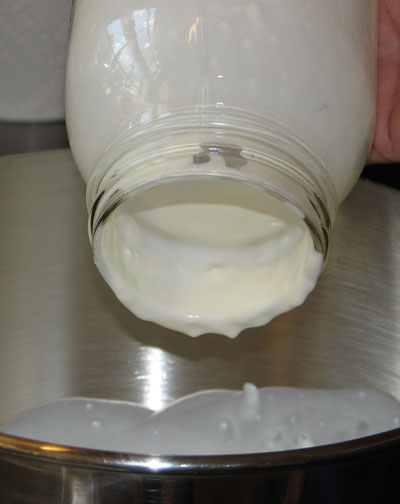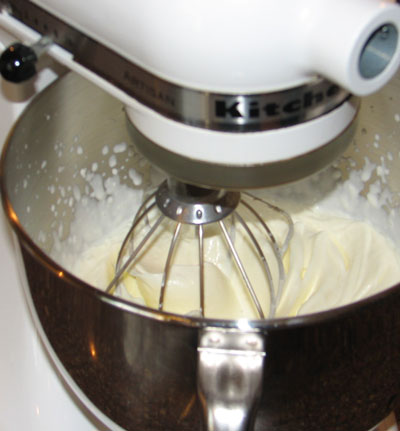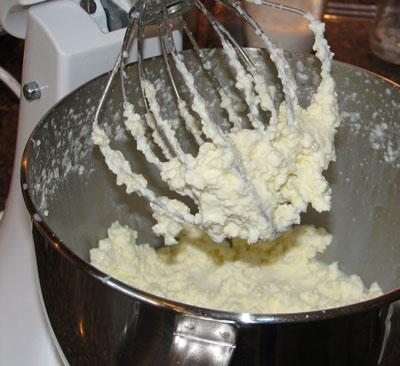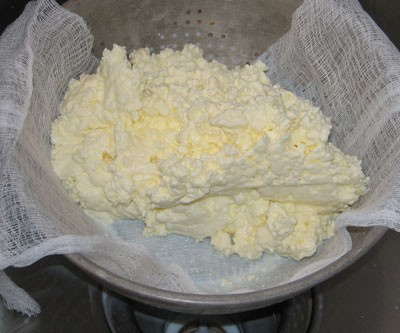We’ve been taking a fermentation class online every Tuesday night. Last week we made a fermented ketchup and it’s pretty good. It needs some vinegar and perhaps a little more sweetener to calm down how tomatoey it is. We started with two cups of tomato paste so you can, perhaps, understand why we want to calm down the tomato flavor.
Yesterday we made butter. The common theme so far in making ketchup and butter is that you mix things together and then let them sit for hours at room temperature so that beneficial bacteria will grow and ferment. We’ve used a starter each time since we don’t have a live culture (yet). And, by letting it sit for hours means 4 days for the ketchup and 18 hours for the milk combination. Yes, letting milk sit out for 18 hours was weird. We ended up putting it on top of the refrigerator for the last 8 hours because we figured that was the warmest spot in our kitchen.
Let’s get to the pictures, shall we?
Here’s an action shot. The milk was a little chunky:

In the video for our lesson, the instructor’s milk was much more chunky than ours. We used ultra-pasteurized heavy cream because that is what I could find at the grocery store in the quantity that we needed. Our instructor wants us to source raw milk. Maybe we’ll do that–over the weekend someone told us about a possible lead. I’m not holding my breath.
Stiff peaks formed pretty easily:

And, then the milk started to fly and we had to hold up a towel to stop milk from hurling itself all over the kitchen. This happened because the buttermilk separated from the butter solids and it happened QUICKLY (like OMG we just made butter!):

We drained the buttermilk off because we are wasteful, but honestly I’m not sure what we were going to do with it. We already have a container of commercial buttermilk in the refrigerator that will likely curdle into God knows what.

If you’ve ever made cheese, this step is pretty similar. You have to get the liquid out and so we looped the cheesecloth and squished the liquid out into the sink. Then we dumped it on the counter and saved a quarter of it as unsalted butter and then put sea salt in the remainder. We should have ground up the sea salt more as I bit into a bit of salt this morning while enjoying a piece of toast. Not that it was a bad thing, but a little distracting.

In the above picture, the butter was very soft, naturally. But this morning after a night in the refrigerator it came out of the container like you’d expect butter to behave after spending hours in the chill. We don’t use a lot of whipped butter, but I suppose this has that consistency. So far we’ve only had it spread on toast and it tastes like butter. I’m sure if we used raw milk it would be more grassy but this is pretty much what you’d expect: mild and a little salty.
